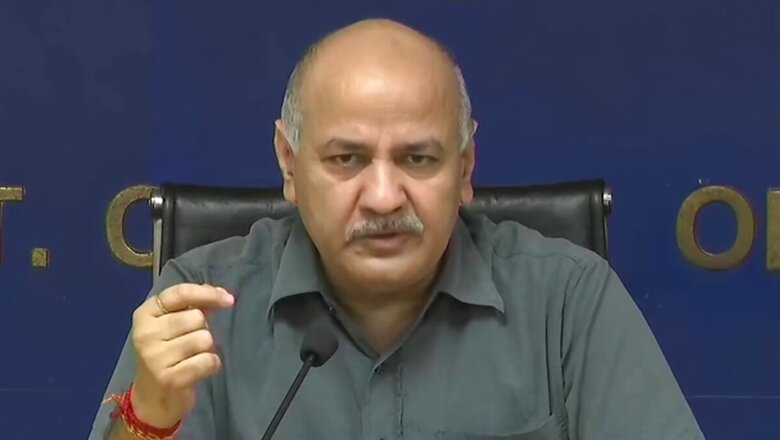
views
Delhi Deputy Chief Minister Manish Sisodia on Tuesday appealed to the Centre to play a “crucial role” in controlling pollution in north India and curb stubble burning. The national capital’s air quality was in the “very poor” category in the morning, the first time this season, with calm winds and low temperatures allowing accumulation of pollutants.
“Stubble burning has started in neighbouring states and smoke has started reaching Delhi. The Delhi government has taken several measures to reduce pollution throughout the year but why is that suddenly when stubble burning begins everybody is concerned about pollution and nothing is done throughout the year,” Sisodia told reporters. “We say it again and again that it is not just Delhi which is affected by pollution but whole of north India,” he said.
smoke from crop residue burning reaches Delhi, its “intensity is somewhat reduced but imagine how badly it will be affecting people living in Punjab and Haryana where stubble burning is actually taking place”, the deputy chief minister said. Stubble burning is a contributor to air pollution and governments of various states, including Punjab and Haryana, have taken several steps like implementing stringent measures and providing farmers with machinery to process crop residue, to stop the practice. The Centre should take responsibility, Sisodia said and appealed to “the (central) government to play a crucial role in controlling pollution in north India and also curb stubble burning”.
Earlier in the day, Chief Minister Arvind Kejriwal had also said that state governments should stop blaming each other and work together to find a solution to the issue of stubble burning, one of the major reasons for the yearly problem of poor air in Delhi-NCR during winters. Kejriwal said while farmers of neighbouring states and people of Delhi are bearing the brunt of stubble burning, governments have shut their eyes. The Ministry of Earth Sciences’ Air Quality Early Warning System for Delhi has said that an increase in farm fires in Punjab, Haryana and neighbouring regions of Pakistan is also going to impact the air quality in Delhi-NCR. The city recorded an air quality index (AQI) of 304 at 9:30 am, which falls in the very poor category. The 24-hour average AQI was 261 on Monday, the worst since February. It was 216 on Sunday and 221 on Saturday. Wazirpur (AQI 380), Vivek Vihar (AQI 355) and Jahangirpuri (AQI 349) recorded the highest pollution levels.
An AQI between 0 and 50 is considered ‘good’, 51 and 100 ‘satisfactory’, 101 and 200 ‘moderate’, 201 and 300 ‘poor’, 301 and 400 ‘very poor’, and 401 and 500 ‘severe’. A senior scientist at the Delhi Pollution Control Committee said the dip in the air quality can be attributed to low wind speed and temperatures which allowed accumulation of pollutants.
“Stubble burning has also increased in neighbouring states. Also, the ventilation index is low, he said. Ventilation index is the speed at which pollutants can get dispersed. A ventilation index lower than 6000 sqm/second, with average wind speed less than 10 kmph, is unfavourable for dispersion of pollutants.
Read all the Latest News and Breaking News here


















Comments
0 comment